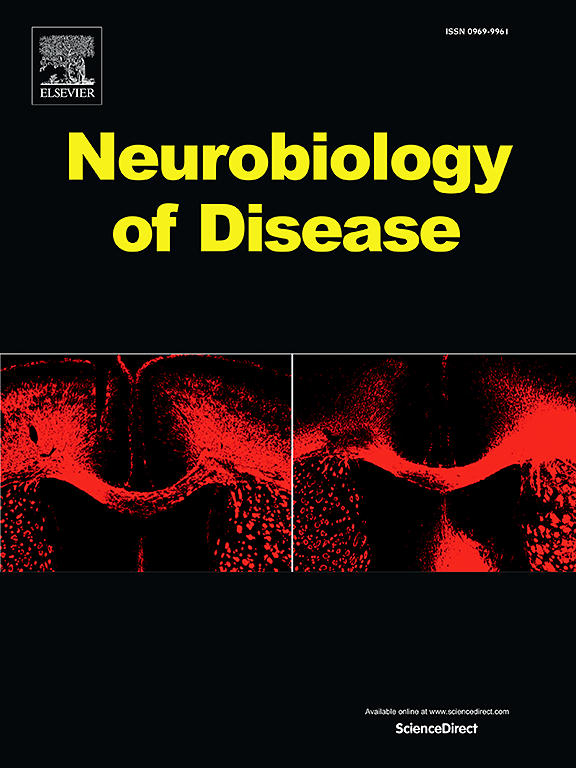Multiple sclerosis lesions exhibit sex-specific steroid changes
IF 5.6
2区 医学
Q1 NEUROSCIENCES
引用次数: 0
Abstract
Sex differences in disease susceptibility and progression in multiple sclerosis (MS) indicate hormonal influences. We previously found sex differences in steroidogenic enzyme expression in mixed active/inactive (mixed) and inactive lesions, suggesting increased synthesis and signalling of progesterone in females and of estradiol (E2) in males. Here we measured steroid levels in mixed and inactive MS lesions (14 males, 16 females) and control donor white matter (10 males, 10 females) by gas chromatography–mass spectrometry (GC/MS). In mixed and inactive lesions, we found a female-specific increase in the production of the neuroactive steroid allopregnanolone, and a reduction in testosterone metabolites and the precursor androgen dehydroepiandrosterone (DHEA). In males, however, most steroids remained unchanged, although the weakly neuroactive 5α-DHDOC was increased. No significant differences were found in steroid levels in remyelinating MS lesions (6 males, 6 females) and control donor white matter (8 males, 7 females). However, higher gene expression of steroid receptors and of the steroidogenic enzyme AKR1C3 persisted in these remyelinated lesions in females. In vitro, we found that E2, and to a lesser degree progesterone and testosterone, had mostly beneficial effects on cytokine expression in primary microglia isolated from MS donors but not from controls; and on neuroprotective gene (APOE, BDNF, GLT1, IGF1, LIF) expression in human fetal astrocytes, but only under inflammatory conditions. Sex-specific changes in the levels of steroids, their metabolizing enzymes, their receptors, and the actions of steroids on glial neuroinflammatory responses may contribute to the sex differences in MS disease progression and lesion resolution.
多发性硬化症病变表现出性别特异性类固醇改变
多发性硬化症(MS)中疾病易感性和进展的性别差异表明激素的影响。我们之前发现,在混合活性/非活性病变(混合)和非活性病变中,类固醇生成酶的表达存在性别差异,表明雌性黄体酮和雄性雌二醇(E2)的合成和信号传导增加。在这里,我们用气相色谱-质谱(GC/MS)测量了混合和非活性MS病变(14名男性,16名女性)和对照供体白质(10名男性,10名女性)的类固醇水平。在混合性和非活动性病变中,我们发现女性特异性的神经活性类固醇异孕酮产生增加,睾丸激素代谢物和前体雄激素脱氢表雄酮(DHEA)减少。然而,在雄性中,大多数类固醇保持不变,尽管弱神经活性的5α-DHDOC增加。在髓鞘再生MS病变(6名男性,6名女性)和对照供体白质(8名男性,7名女性)中,类固醇水平无显著差异。然而,类固醇受体和类固醇生成酶AKR1C3的较高基因表达持续存在于女性的这些髓鞘再生病变中。在体外,我们发现E2,以及在较小程度上黄体酮和睾酮,对MS供体分离的初级小胶质细胞的细胞因子表达有主要的有益影响,但对对照组没有影响;以及人类胎儿星形胶质细胞中神经保护基因(APOE, BDNF, GLT1, IGF1, LIF)的表达,但仅在炎症条件下。激素水平、代谢酶、受体以及激素对神经胶质炎症反应的作用的性别特异性变化可能导致MS疾病进展和病变消退的性别差异。
本文章由计算机程序翻译,如有差异,请以英文原文为准。
求助全文
约1分钟内获得全文
求助全文
来源期刊

Neurobiology of Disease
医学-神经科学
CiteScore
11.20
自引率
3.30%
发文量
270
审稿时长
76 days
期刊介绍:
Neurobiology of Disease is a major international journal at the interface between basic and clinical neuroscience. The journal provides a forum for the publication of top quality research papers on: molecular and cellular definitions of disease mechanisms, the neural systems and underpinning behavioral disorders, the genetics of inherited neurological and psychiatric diseases, nervous system aging, and findings relevant to the development of new therapies.
 求助内容:
求助内容: 应助结果提醒方式:
应助结果提醒方式:


